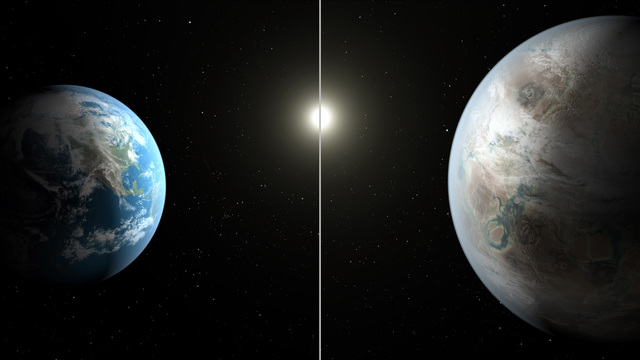The W.M. Keck Observatory atop Mauna Kea provided a helping hand to NASA as it sought confirmation of a planet considered a “close cousin” of Earth and a potential host for life. ADVERTISING The W.M. Keck Observatory atop Mauna Kea
The W.M. Keck Observatory atop Mauna Kea provided a helping hand to NASA as it sought confirmation of a planet considered a “close cousin” of Earth and a potential host for life.
The observatory, which operates the world’s most powerful optical telescopes, was one of three the space agency used to refine data from its Kepler space telescope before making the major announcement Thursday.
“It’s obviously super exciting,” said Keck spokesman Steve Jefferson.
“It’s the type of science we always hoped to do and this is what we do every night.”
The planet, dubbed Kepler-452b, is about 1,400 light years away and resides within the habitable zone of its solar system.
NASA said it’s about 5 percent farther from its star than Earth is from the sun. Both stars have similar characteristics, though the parent star of Kepler-452b would be 1.5 billion years older.
While it’s not known if life exists there, conditions on the planet, which is 60 percent larger than Earth, could be just right.
“It is the closet thing that we have to another place that somebody else might call home,” said Jon Jenkins, the lead data analyst for NASA’s Ames Research Center in California.
Jefferson said Kepler first detected evidence of the planet by observing how its star’s light is dimmed as it passes by.
Keck later used its telescopes to study the effect of the planet’s gravity on the star, he said.
That helped confirm its presence as well as other factors, such as its size and orbit, Jefferson said.
While the planet is too far away to consider visiting, he said its discovery helps to provide a better understanding of how common life might be beyond Earth.
“We already knew that statistically 20 percent of stars host Earth-sized planets that could have liquid water on it,” Jefferson said. “This was the first confirmation of one.”
So far, 1,030 planets have been found beyond our solar system.
Planets the size of Kepler-452b have a good chance of being rocky, according to NASA.
The planet takes 385 days to orbit its star.
Jefferson said Keck also recently assisted NASA’s New Horizons mission by observing the chemical composition of ice on Pluto’s surface.
The Associated Press contributed to this report.
Email Tom Callis at tcallis@hawaiitribune-herald.com.



